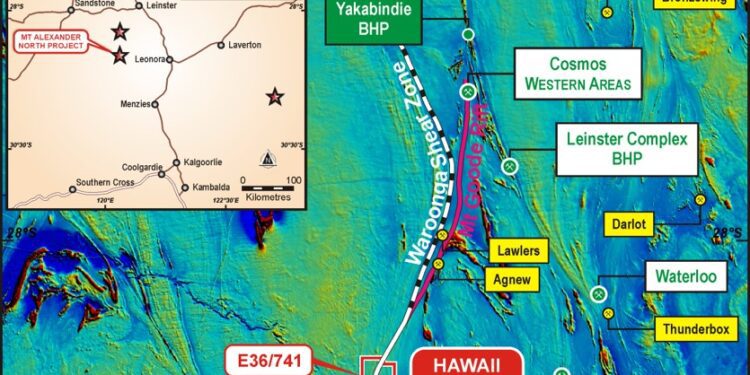St George Mining Limited (ASX: SGQ) has obtained “significant” results from the seismic survey recently completed at its flagship high-grade Mt Alexander Project, located in the north-eastern Goldfields in Western Australia.
Executive Chairman, John Prineas, said the first-ever seismic survey at Mt Alexander has delivered not only a breakthrough in the company’s understanding of the complex intrusive system at Mt Alexander but also an outstanding new target for a potential massive sulphide deposit.
“Our systematic exploration over the past year has been primarily focused on testing the deeper areas at Mt Alexander to build on the four shallow high-grade nickel-copper sulphide discoveries already made across more than a 5.5km east-west strike length of the Cathedrals Belt.
“The geological thinking is that if the system is that long, it must also be deeper than the shallow mineralisation identified.
“The mineralisation we have at Mt Alexander is unique – the rare combination of high-grade nickel, copper, cobalt and platinum group metals is not seen anywhere else in Australia. Our challenge is to discover a large deposit of this kind of mineralisation.
“Accordingly, we are very excited with the new, large target identified by the seismic data. The new target is located down-dip from the shallow massive sulphides drilled at Investigators and has seismic properties consistent with those shallow massive sulphides.
“This is an absolutely compelling target for a potential major discovery”
Seismic Survey
The first-ever seismic survey at the Cathedrals Belt was carried out during September. Three north-south orientated 2D seismic lines approximately 1km apart were completed over a section of the West End and Investigators Prospects.
The seismic survey has successfully mapped the complex intrusive structures at Mt Alexander in all three lines.
The main Cathedrals Belt structure is clearly seen in the data as continuing down-dip to the north. This is consistent with our geological model, which interprets this structure – already confirmed by drilling as being highly mineralised at shallow depths – as dipping to the north-northwest with potential for massive sulphides to be present down-dip of the shallow nickel-copper sulphides already discovered.
Modelling and interpretation of the new seismic data have identified a large target along the down-dip continuation of the Cathedrals structure at depths yet to be explored.
The target has the same reflective properties as the known shallow massive sulphides. Significantly, there are no other rocks known to be present in the Cathedrals Belt that could record a similar seismic recording to massive sulphides.
The target is modelled in 2D with a dip-extent of more than 450m. The east-west strike length and thickness cannot yet be modelled due to the 2D nature of the survey.
The target dips to the north-northwest, consistent with the dip of the host structure, and lies within Exploration Licence E29/548 (100% St George). The target is located approximately 800m below surface.
Additional structures parallel to the Cathedrals Belt have also been observed in the seismic data. Four north-northwest dipping structures are mapped – one to the south of the Cathedrals Belt and another three to the north.
The mapping of these structures is limited to the survey area only and further seismic surveys are being designed to cover the full extent of the east-west strike of the Cathedrals Belt. Interestingly, another three structures dipping to the south have also been noted. The significance of these structures needs further investigation.
The intersection of the south dipping structures with the north dipping structures could be a trap site for sulphide mineralisation. Interpretation of these additional structures is continuing and anticipated to define further targets for drill testing.
The three seismic lines, for almost 12 lineal kilometres, completed at Mt Alexander have collected data up to 2,000m below surface across a 3km east-west strike. The north-south lines commenced to the south of the east-west Cathedrals Belt and continued north into Exploration Licence 29/548 (100% St George) where underexplored structures that are oriented parallel to the Cathedrals Belt are situated.
The intrusive-host structure at the Cathedrals Belt is interpreted from drill hole data to dip to the north-northwest at 40 degrees. The seismic data shows that the Cathedrals Belt structure continues in the down-dip direction into E29/548 (100% St George), with the new large target located within that tenement.
Line 1 of the seismic survey was completed over an area with extensive drilling at Investigators. The type of rocks intersected included massive nickel-copper sulphides, mafic rocks and granite. The drill hole data for these various intersections provides a reference point for interpreting the seismic recordings.
Encouragingly, the reflective properties at the new target are consistent with the reflective properties of the known massive sulphides identified from existing drill core.
For further information please visit: https://stgm.com.au/












